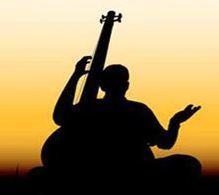An overview of the Lessons in Hindustani Vocal Music Classes
- Shivani Rajput
- Apr 22, 2023
- 3 min read

Hindustani classical vocal music is a rich and diverse tradition that offers a wealth of learning opportunities for beginners. Here are some suggested topics that you can discuss with your instructor to cover in your hindustani vocal classes.
Introduction to Hindustani Vocal Classes
Ask your hindustani Vocal Classes instructor to discuss the history, origins, and key elements of Hindustani classical music, as well as the differences between Hindustani and Carnatic music traditions.
Swaras (notes):
See, if the the seven basic swaras (Sa, Re, Ga, Ma, Pa, Dha, Ni) and their variations (shuddha, komal, and teevra) are introduced. Teach students to recognize and sing these swaras.
Sargam (solfege):
The students should be taught how to sing sargam, the Indian solfege system, which uses the seven swaras as syllables for vocal exercises and compositions.
Raga (melodic framework):
Make sure that introduction of the concept of ragas, their structure, and their emotional expression is done in the Hindustani Vocal Classes curriculum. Begin with a few simple and popular ragas, such as Yaman, Bhairav, or Bhupali.
Taal (rhythmic cycles):
Your Hindustani Vocal Classes should include the concept of taal and its importance in Hindustani classical music. Teach students basic taals like Teental, Dadra, and Keharwa, as well as how to recognize and recite theka (basic rhythm pattern) for each taal.
Voice culture and techniques:
Provide guidance on proper posture, breathing techniques, and voice projection to help students develop a strong vocal foundation.
Alankar (ornamentation):
Introduce basic alankars, such as meend (glide), gamak (oscillation), and murki (grace notes), which are essential for expressive and nuanced singing.
Basic compositions:
Teach students simple compositions, like bandish (fixed composition) or bhajan (devotional song), to help them apply their understanding of swaras, ragas, and taals in a musical context.
Listening and appreciation:
Encourage students to listen to and analyze recordings of renowned Hindustani classical vocalists to develop their understanding of the music and its subtleties.
Music theory:
Teach basic music theory concepts, such as the structure of a raga performance (alap, jor, jhala, gat), and the roles of accompanying instruments like the tabla and harmonium.
By covering these topics, beginners will develop a strong foundation in Hindustani classical vocal music, allowing them to progress further in their musical journey.

How to Get the Best Hindustani Vocal Classes for yourself
Learning basic compositions in Hindustani vocal classes requires dedication, patience, and consistent practice. Here are some steps to help you get started:
Find a teacher or a learning resource:
Look for a qualified and experienced teacher who can guide you through the learning process. Alternatively, you can use online resources, tutorials, and courses to learn the basics of Hindustani classical music. This problem of yours will be sorted since you have come to Mela Music School. With our track record, eminent faculties and international tie-ups, we can definitely help you experience one of the best hindustani vocal classes in Bangalore or offline.
Understand the basics:
Familiarize yourself with the foundational concepts of Hindustani music, such as swaras (notes), ragas (melodic frameworks), and taal (rhythm). Learn the seven basic swaras – Sa, Re, Ga, Ma, Pa, Dha, and Ni – and their variations.
Learn about ragas:
Study the basic ragas, like Yaman, Bhairav, Bhupali, and Bihag. Understand their aroha (ascending notes) and avaroha (descending notes), and practice singing them in different octaves.
Practice alankars:
Alankars are combinations of notes used to build patterns for practice. They help you develop voice control, pitch accuracy, and a sense of rhythm. Practice alankars daily to improve your vocal abilities.
Learn basic compositions:
Start with simple compositions or bandish in various ragas, focusing on both melody and lyrics. Practice singing the compositions at different speeds (vilambit and drut) to develop a better understanding of the raga's nuances.
Develop taal sense:
Learn the basic taals like Teental, Dadra, and Rupak. Understand their structure, theka (basic rhythm pattern), and how to count the beats. Practice singing compositions while keeping taal to develop a strong sense of rhythm.
Record and review:
Record yourself singing and listen to the recordings critically. Identify areas that need improvement, such as pitch, tone, pronunciation, or rhythm.
Consistent practice:
Practice regularly, ideally every day, to develop muscle memory and improve your vocal abilities.

Listen to maestros:
Listen to recordings of renowned Hindustani classical musicians to get a better understanding of the nuances and variations in compositions. This will help you develop a greater appreciation for the art form.
Be patient and persistent:
Learning Hindustani vocal music is a lifelong journey. Be patient, stay committed, and maintain a positive attitude throughout your learning process.




Comments